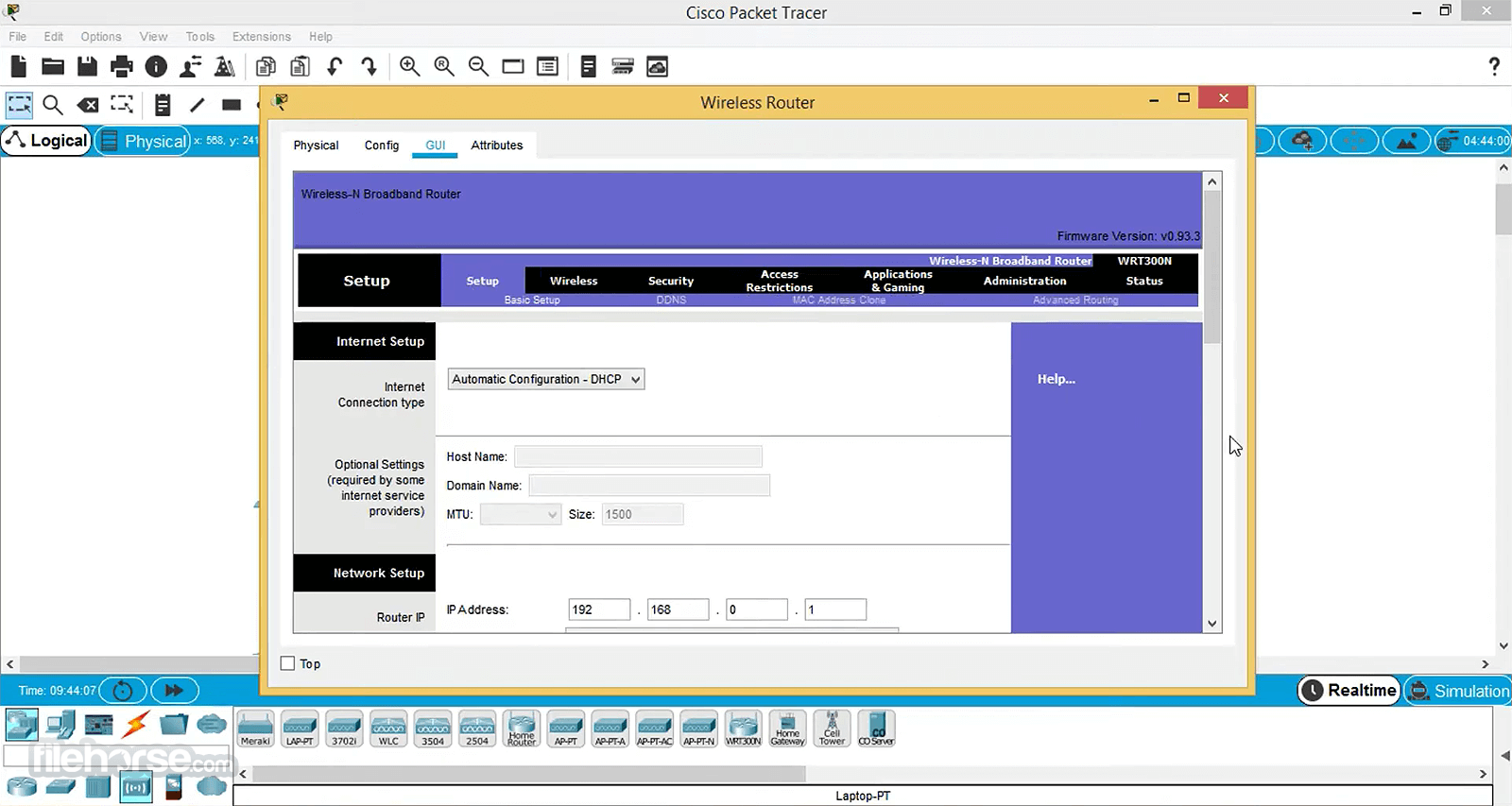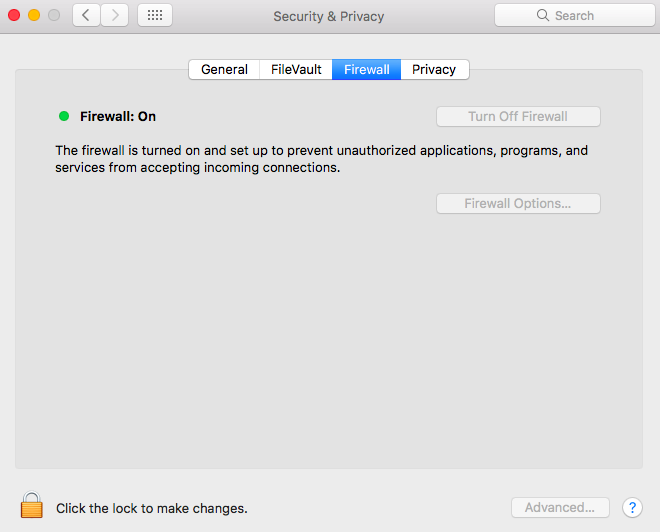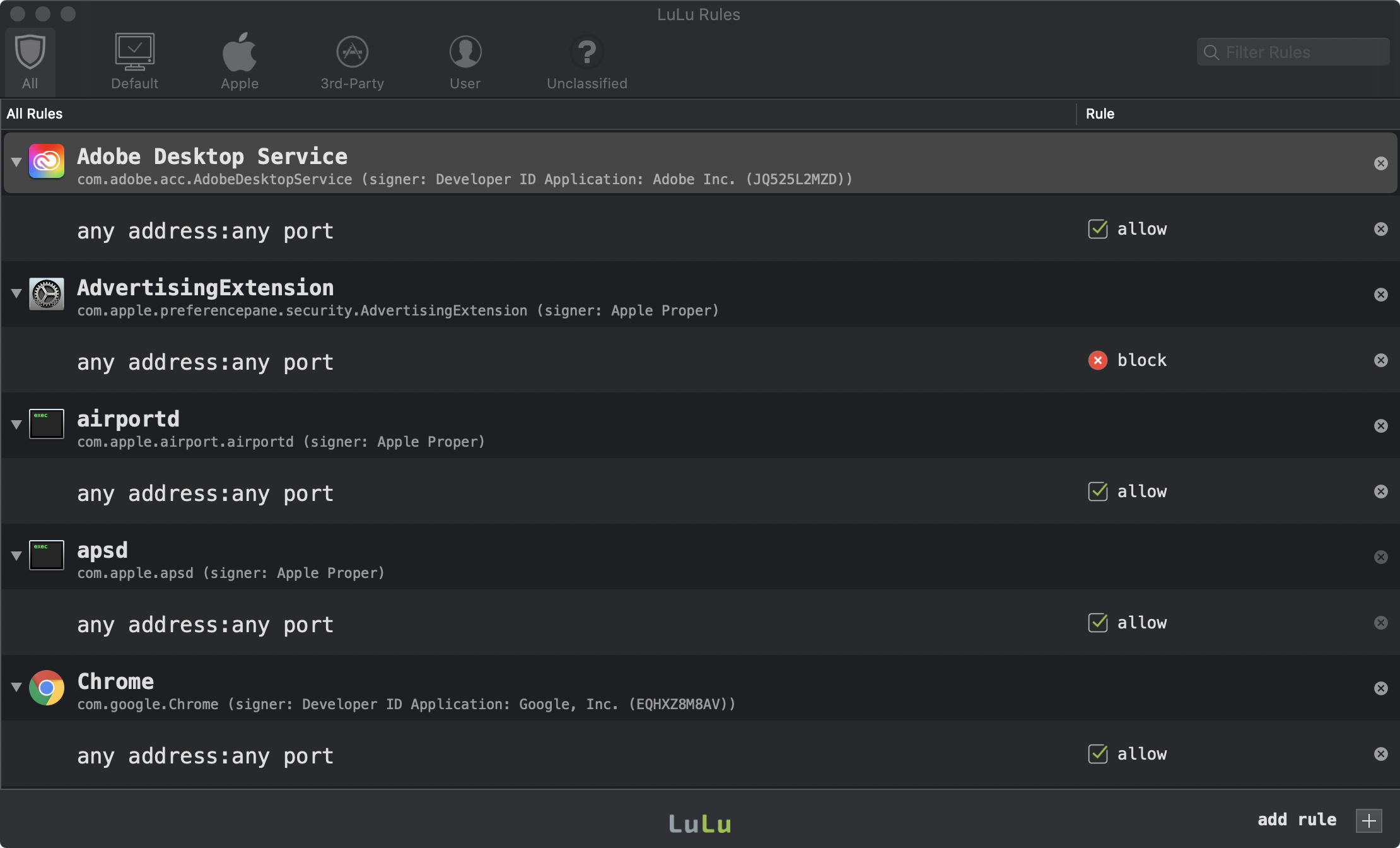While built-in macOS firewall efficiently blocks unwanted incoming connections, Paragon Firewall for Mac helps you control programs and services that send information to the Internet, making sure not a single bit of data leaves your computer without your permission
What is a Firewall and how Does It Work? A firewall is a barrier or shield that monitors either. After you've enabled the service, you may need to configure your network or firewall to allow outbound connections between it and your endpoints. Licensing requirements. Microsoft Defender Advanced Threat Protection for Mac requires one of the following Microsoft Volume Licensing offers: Microsoft 365 E5 (M365 E5) Microsoft 365 E5 Security.
First Firewall in the App Store

familiar interface
The familiar, fully integrated interface that helps you control and manage your network traffic
network monitoring
Prevents any app from unauthorized data sending
Detailed Traffic Statistics – NEW FEATURE!
Get the detailed incoming/outgoing traffic statistics for each application running on your Mac.
From the convenient dashboards, check the lifetime data (starting from the firewall installation) via daily, weekly, monthly, and yearly reports. Quickly unfold or hide the statistics section with a single click.
Paragon Firewall for Mac is FREE, with no time limits.
Silent mode
Sometimes, it’s convenient to work in silence. You can turn off all notifications and temporarily allow or block all outgoing connections.
Alert mode
Whenever a new app tries to go online, you’re prompted whether you want to allow it to communicate over the Internet, and your choice is remembered.
Block separate app
Firewall For Macos
Block single app allowing others to work freely. Blocked app won’t able to set outgoing connection with remote servers and send data
Activate/Deactive through one click
To stop the app you need to click on the button and all connections will be recover. Your settings and rules will be preserved
OS X v10.5.1 and later include an application firewall you can use to control connections on a per-application basis (rather than a per-port basis). This makes it easier to gain the benefits of firewall protection, and helps prevent undesirable apps from taking control of network ports open for legitimate apps.
Configuring the application firewall in OS X v10.6 and later
Use these steps to enable the application firewall:
- Choose System Preferences from the Apple menu.
- Click Security or Security & Privacy.
- Click the Firewall tab.
- Unlock the pane by clicking the lock in the lower-left corner and enter the administrator username and password.
- Click 'Turn On Firewall' or 'Start' to enable the firewall.
- Click Advanced to customize the firewall configuration.
Mac Firewall


Configuring the Application Firewall in Mac OS X v10.5
Make sure you have updated to Mac OS X v10.5.1 or later. Then, use these steps to enable the application firewall:
- Choose System Preferences from the Apple menu.
- Click Security.
- Click the Firewall tab.
- Choose what mode you would like the firewall to use.
Advanced settings
Block all incoming connections

Selecting the option to 'Block all incoming connections' prevents all sharing services, such as File Sharing and Screen Sharing from receiving incoming connections. The system services that are still allowed to receive incoming connections are:
- configd, which implements DHCP and other network configuration services
- mDNSResponder, which implements Bonjour
- racoon, which implements IPSec
To use sharing services, make sure 'Block all incoming connections' is deselected.
Allowing specific applications
To allow a specific app to receive incoming connections, add it using Firewall Options:
- Open System Preferences.
- Click the Security or Security & Privacy icon.
- Select the Firewall tab.
- Click the lock icon in the preference pane, then enter an administrator name and password.
- Click the Firewall Options button
- Click the Add Application (+) button.
- Select the app you want to allow incoming connection privileges for.
- Click Add.
- Click OK.
You can also remove any apps listed here that you no longer want to allow by clicking the Remove App (-) button.
Automatically allow signed software to receive incoming connections
Firewall For Mac Os Mojave
Applications that are signed by a valid certificate authority are automatically added to the list of allowed apps, rather than prompting the user to authorize them. Apps included in OS X are signed by Apple and are allowed to receive incoming connections when this setting is enabled. For example, since iTunes is already signed by Apple, it is automatically allowed to receive incoming connections through the firewall.
If you run an unsigned app that is not listed in the firewall list, a dialog appears with options to Allow or Deny connections for the app. If you choose Allow, OS X signs the application and automatically adds it to the firewall list. If you choose Deny, OS X adds it to the list but denies incoming connections intended for this app.
If you want to deny a digitally signed application, you should first add it to the list and then explicitly deny it.
Some apps check their own integrity when they are opened without using code signing. If the firewall recognizes such an app it doesn't sign it. Instead, it the 'Allow or Deny' dialog appears every time the app is opened. This can be avoided by upgrading to a version of the app that is signed by its developer.
Enable stealth mode
Firewall For Mac
Enabling stealth mode prevents the computer from responding to probing requests. The computer still answers incoming requests for authorized apps. Unexpected requests, such as ICMP (ping) are ignored.
Firewall limitations
Firewall For Mac
The application firewall is designed to work with Internet protocols most commonly used by applications – TCP and UDP. Firewall settings do not affect AppleTalk connections. The firewall may be set to block incoming ICMP 'pings' by enabling Stealth Mode in Advanced Settings. Earlier ipfw technology is still accessible from the command line (in Terminal) and the application firewall does not overrule any rules set using ipfw. If ipfw blocks an incoming packet, the application firewall does not process it.
